The advent of long-read sequencing platforms has transformed the landscape of genomics, offering researchers unprecedented insights into the complexities of the genome. This article explores the advancements in long-read sequencing technologies, focusing on nanopore sequencing and single-molecule real-time (SMRT) sequencing. We delve into the principles underlying these platforms, their applications in deciphering complex genomic regions, structural variants, and repetitive sequences, and the challenges and future prospects of long-read sequencing.
Nanopore Sequencing: Unraveling Genomic Complexity
Nanopore Sequencing Principles
Nanopore sequencing, pioneered by Oxford Nanopore Technologies, operates on the principle of passing DNA molecules through a protein nanopore, where changes in electrical current are measured to determine the sequence. This technology offers several advantages over traditional short-read sequencing methods.
Advantages of Nanopore Sequencing
– Generation of long reads: Nanopore sequencing produces long reads spanning thousands of base pairs, enabling the direct sequencing of complex genomic regions without the need for assembly.
– Detection of structural variants: The long reads generated by nanopore sequencing facilitate the accurate detection of structural variants, including insertions, deletions, and inversions, providing insights into genomic rearrangements associated with diseases.
– Resolution of repetitive sequences: Repetitive sequences, which pose challenges for short-read sequencing platforms, can be resolved with nanopore sequencing due to its ability to produce long reads that span repetitive elements.
Applications of Nanopore Sequencing
Nanopore sequencing finds applications across various fields, including medical research, microbial ecology, and evolutionary biology.
Medical Research: Nanopore sequencing has facilitated the identification of disease-causing mutations, including those located in non-coding regions of the genome, contributing to our understanding of disease mechanisms and potential therapeutic targets.
Microbial Ecology: The technology enables comprehensive characterization of microbial communities in environmental and clinical settings, shedding light on microbial diversity, function, and interactions.
Evolutionary Biology: Nanopore sequencing aids in the assembly of reference genomes for non-model organisms, enhancing our understanding of biodiversity and evolutionary relationships across diverse taxa.
Single-Molecule Real-Time (SMRT) Sequencing: Unveiling Genomic Dynamics
SMRT Sequencing Principles
SMRT sequencing, developed by Pacific Biosciences, relies on the real-time observation of DNA polymerase activity as it incorporates fluorescently labeled nucleotides into complementary strands. This technology offers long reads with exceptionally high accuracy, enabling the detection of base modifications and DNA sequence information.
Advantages of SMRT Sequencing
– High accuracy and long reads: SMRT sequencing provides long reads with high accuracy, facilitating the detection of structural variants and base modifications, such as methylation, along with DNA sequence information.
– Resolution of complex genomic regions: SMRT sequencing excels in resolving complex genomic regions, including repetitive elements and segmental duplications, which are often misassembled or overlooked by short-read sequencing platforms.
– Insights into genomic dynamics: The real-time observation of DNA polymerase activity during sequencing provides insights into DNA replication and repair processes, shedding light on genome stability and evolution.
Applications of SMRT Sequencing
SMRT sequencing has diverse applications across fields such as medical genetics, epigenetics, and evolutionary biology.
Medical Genetics: SMRT sequencing enables the comprehensive characterization of structural variants and disease-causing mutations, contributing to the diagnosis and understanding of genetic disorders.
Epigenetics: The technology facilitates the detection of DNA modifications, such as methylation, providing insights into gene regulation, development, and disease.
Evolutionary Biology: SMRT sequencing aids in studying genome evolution, population genetics, and speciation, enhancing our understanding of evolutionary processes across diverse taxa.
Software and Hardware Required for Long-Read Sequencing Platforms
Long-read sequencing platforms, such as nanopore sequencing and single-molecule real-time (SMRT) sequencing, require specialized software and hardware components to operate effectively. Here’s an overview of the software and hardware required for each platform:
Nanopore Sequencing:
Software:
Basecalling Software: This software translates raw electrical signals generated during nanopore sequencing into DNA sequences. Examples include Guppy (Oxford Nanopore Technologies) and Albacore (deprecated, replaced by Guppy).
Alignment and Assembly Tools: Software for aligning long reads to reference genomes or assembling de novo genomes. Common tools include Minimap2, Canu, and Flye.
Variant Calling Software: Tools for identifying variants, including single nucleotide polymorphisms (SNPs) and structural variants, from nanopore sequencing data. Examples include Nanopolish and Medaka.
Visualization Tools: Software for visualizing sequencing data, alignments, and genomic structures. Examples include IGV (Integrative Genomics Viewer) and Bandage.
Hardware:
Nanopore Sequencer: The main hardware component required for nanopore sequencing. This device contains nanopore sensors and electrical circuitry for detecting changes in current as DNA molecules pass through the pores.
Computer: A high-performance computer or server is needed for basecalling, alignment, assembly, variant calling, and data visualization tasks.
Storage: Long-read sequencing generates large amounts of data, so sufficient storage capacity is essential for storing raw sequencing data, intermediate files, and analysis results.
Single-Molecule Real-Time (SMRT) Sequencing:
Software:
Basecalling and Data Processing Software: Software for basecalling and processing raw fluorescence signals generated during SMRT sequencing. This includes SMRT Link software provided by Pacific Biosciences.
Alignment and Assembly Tools: Similar to nanopore sequencing, SMRT sequencing data requires alignment and assembly software for mapping reads to reference genomes or de novo assembly. Popular tools include BLASR and HGAP (Hierarchical Genome Assembly Process).
Variant Calling and Analysis Software: Tools for detecting variants, including SNPs, insertions, deletions, and structural variants, from SMRT sequencing data. Examples include Quiver and Arrow.
Epigenetic Analysis Software: SMRT sequencing also allows for the analysis of DNA modifications, such as methylation. Software for identifying and analyzing DNA modifications includes SMRT Analysis software and tools like SMRT Tools and the SMRT Methylation Analysis Application.
Visualization Tools: Software for visualizing SMRT sequencing data, alignment, and analysis results. Tools like IGV and SMRT Link provide visualization capabilities.
Hardware:
SMRT Sequencer: The hardware instrument for performing SMRT sequencing, typically provided by Pacific Biosciences. This instrument captures fluorescence signals emitted during DNA synthesis.
Compute Cluster or High-Performance Computing (HPC) System: Due to the computational intensity of basecalling, alignment, assembly, variant calling, and epigenetic analysis tasks, a dedicated compute cluster or HPC system with significant processing power and memory is often required.
Storage: Similar to nanopore sequencing, SMRT sequencing generates large volumes of data, necessitating ample storage capacity for storing sequencing data and analysis results.
Challenges and Future Prospects
While long-read sequencing platforms offer numerous advantages, they still face challenges such as higher error rates compared to short-read technologies and the need for continuous improvements in throughput and cost-effectiveness. However, ongoing research and development efforts aim to address these limitations and further enhance the capabilities of long-read sequencing platforms.
Challenges
– Higher error rates: Long-read sequencing platforms often exhibit higher error rates compared to short-read technologies, necessitating error correction strategies to improve accuracy.
– Throughput and cost-effectiveness: Despite advancements, long-read sequencing platforms require further improvements in throughput and cost-effectiveness to compete with short-read technologies for large-scale genomic studies.
Future Prospects
– Technology improvements: Continued advancements in nanopore sequencing and SMRT sequencing technologies are expected to enhance read lengths, accuracy, and throughput, making long-read sequencing more accessible and cost-effective.
– Multi-platform integration: Integration of long-read sequencing data with other genomic technologies, such as short-read sequencing and optical mapping, holds promise for comprehensive genome assembly and structural variant detection.
– Applications in precision medicine: Long-read sequencing platforms are poised to play a crucial role in precision medicine, enabling the identification of rare variants, structural rearrangements, and epigenetic modifications associated with diseases.
Long-read sequencing platforms, such as nanopore sequencing and SMRT sequencing, have revolutionized genomics, offering unprecedented insights into genomic complexity. By enabling the analysis of complex genomic regions, structural variants, and repetitive sequences with improved accuracy and resolution, these technologies have broad applications across diverse fields, from medical research to evolutionary biology. Despite challenges, ongoing advancements in long-read sequencing promise to further unravel the intricacies of the genome and accelerate discoveries in genomics and beyond.



